2025 Yamaha Wolverine RMAX2 1000 Buyer’s Guide
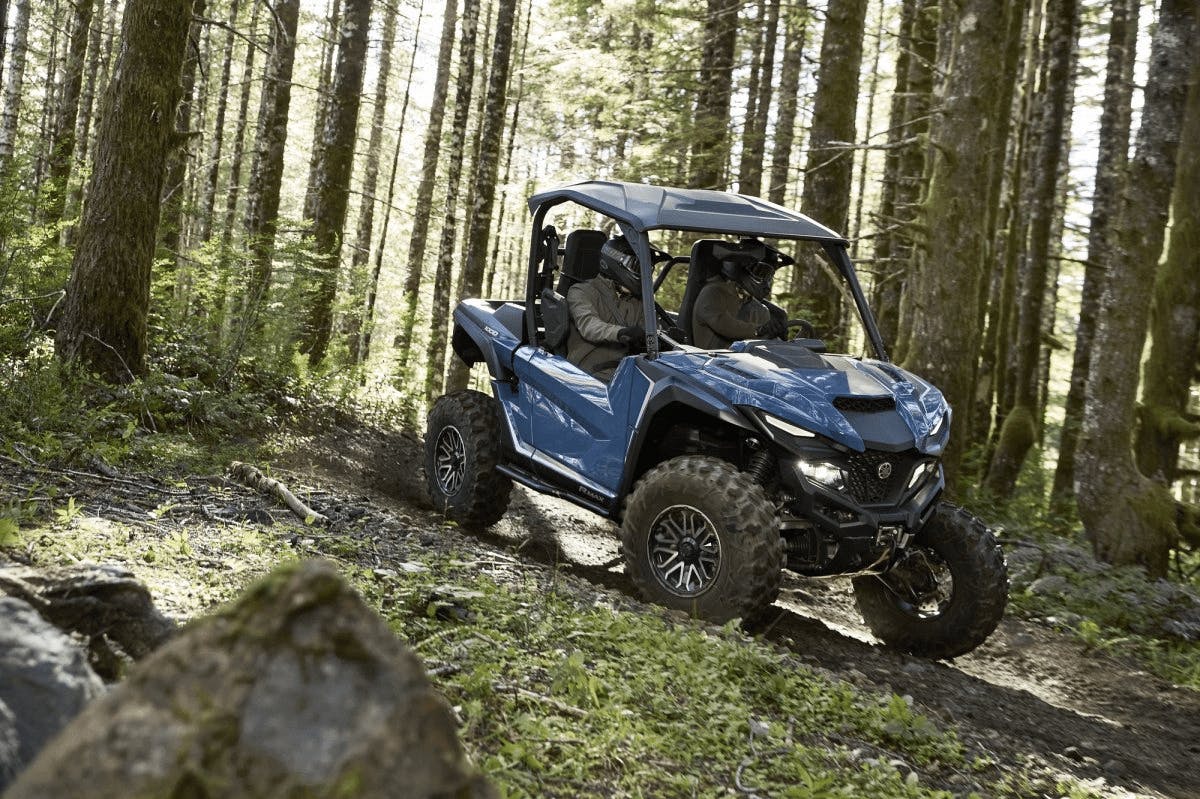
$21,799 MSRP / 105 HP
• fun + Practical rec-ute
• proven yamaha build quality
• perfect for tight trails + modest work
Way more fun than meets the eye.
Sex sells, even with side-by-sides. And let’s be clear: The Yamaha Wolverine RMAX2 1000 is not a sexy machine. This is an older rig, even by side-by-side standards. Take the bodywork off, you’ll see a relatively simple, boxed-steel chassis. The interior is mostly hard plastic. The suspension can be had with quality Fox shocks, but the rest of it looks… unremarkable.
And yet. Few rigs new or old are as much fun in the right conditions. More to the point, the Yamaha is a rec-ute, which means it was engineered to straddle the line between work and play. It lands that balance very well. And above all, the RMAX2 is perfect for how most people actually ride.
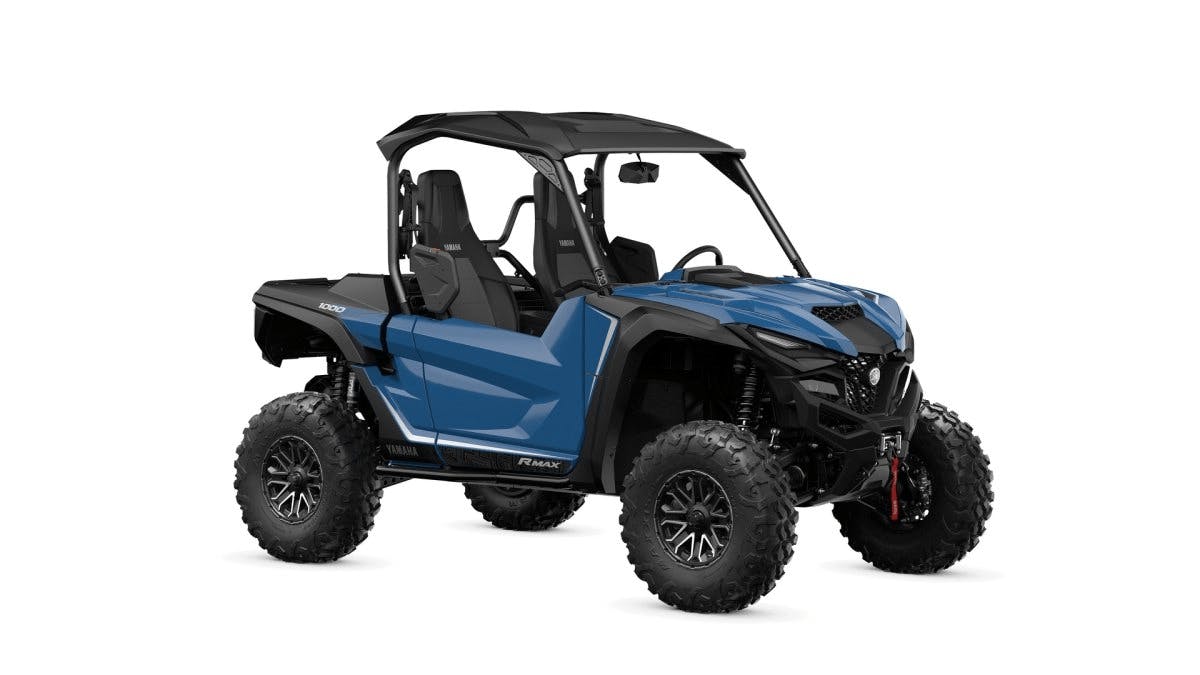
How much power does it make?
The RMAX2 1000 is powered by a 999-cc, four-stroke, dual-overhead-cam, four-valve parallel twin. Yamaha hasn’t released official power figures for this engine, but our testing experience suggests the model makes slightly more than 100 hp at the crank. Most industry estimates place the Yammer’s twin at around 105 hp.
Either way, the engine is utterly fantastic. It’s smooth and torquey across the rev range, with linear power delivery and a relatively low amount of vibration. From the driver’s seat, you hear a nice combination of intake growl and exhaust snort. The CVT automatic shifts nicely and gets out of the way, adjusting its drive ratio in low-key fashion. (Context: Some current Polaris models cost twice as much as the RMAX2 but don’t shift as nicely.)
The sole downside with this engine comes in comfort. The driveline pumps a good amount of heat into the cabin.
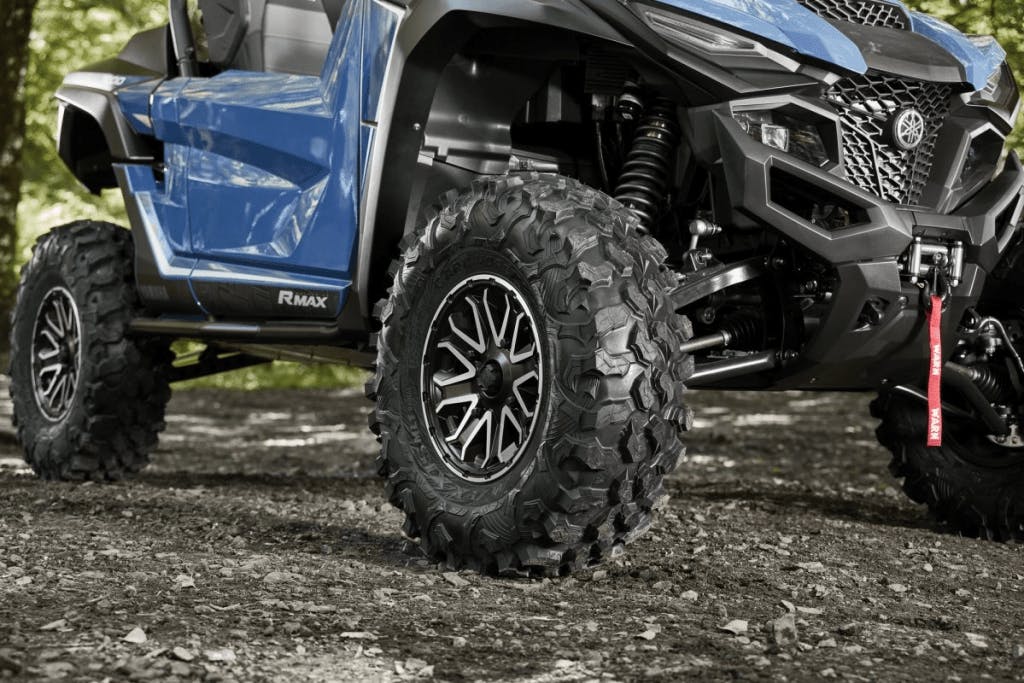
What makes it special?
This is an old rig, but she slaps. The RMAX2 1000 has been on the market more than half a decade, but the model continues to utterly nail its design brief. It’s fun ambling down a trail. It’s good for modest work. And above all, when you lean on it—when you really grab the Yamaha by the scruff of the neck and throw it around—the chassis wakes up. It becomes more compliant, more forgiving, and downright fun.
If you drive an RMAX right, there’s more fun baked into it than in many machines costing two or three times as much. All this from a model that looks like ten years ago, that can feel underwhelming and clunky at low speed.
Little of the Yamaha’s juju comes out in a short ride—you have to spend time with it. And happily, the RMAX2 is most at home carrying big pace on tight trails. Which makes sense, because Yamaha’s U.S. arm is based in Georgia; the RMAX2’s American-market R&D testing took place mostly in the close-quarters Appalachians.
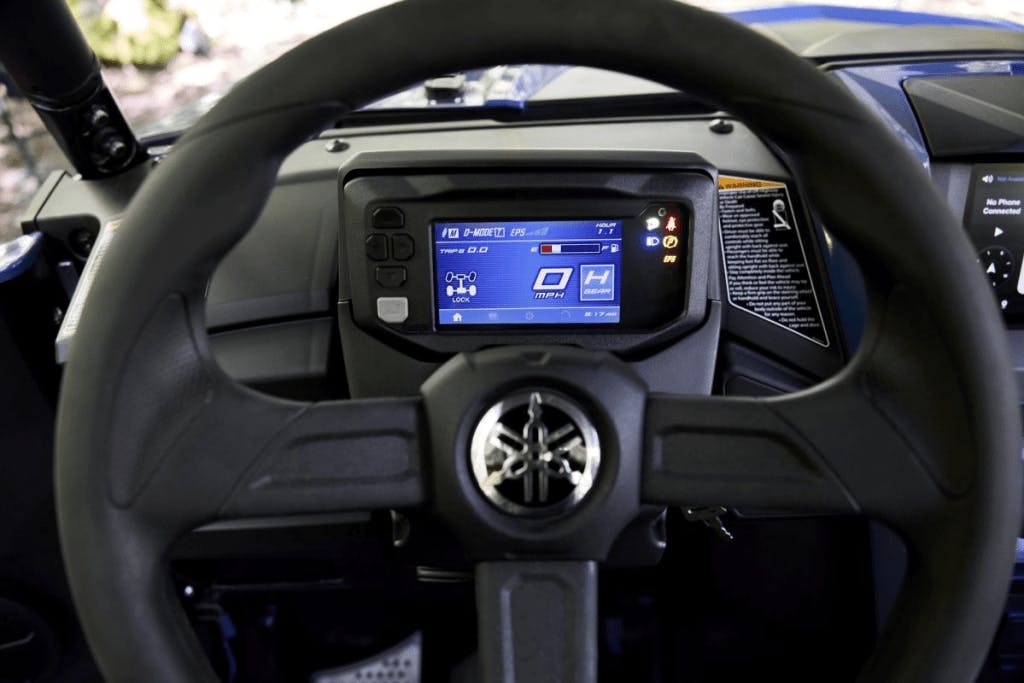
There’s hidden talent here, but the joy is in how this rig mixes the pieces. The RMAX2 is a perennial standout in our RTI testing, regularly smoking machines with far more measurable wheel travel.
The short wheelbase, the suspension geometry, the approach and departure angles… none of it stands out on a spec sheet, but all of it stacks up into something more than you’d expect.
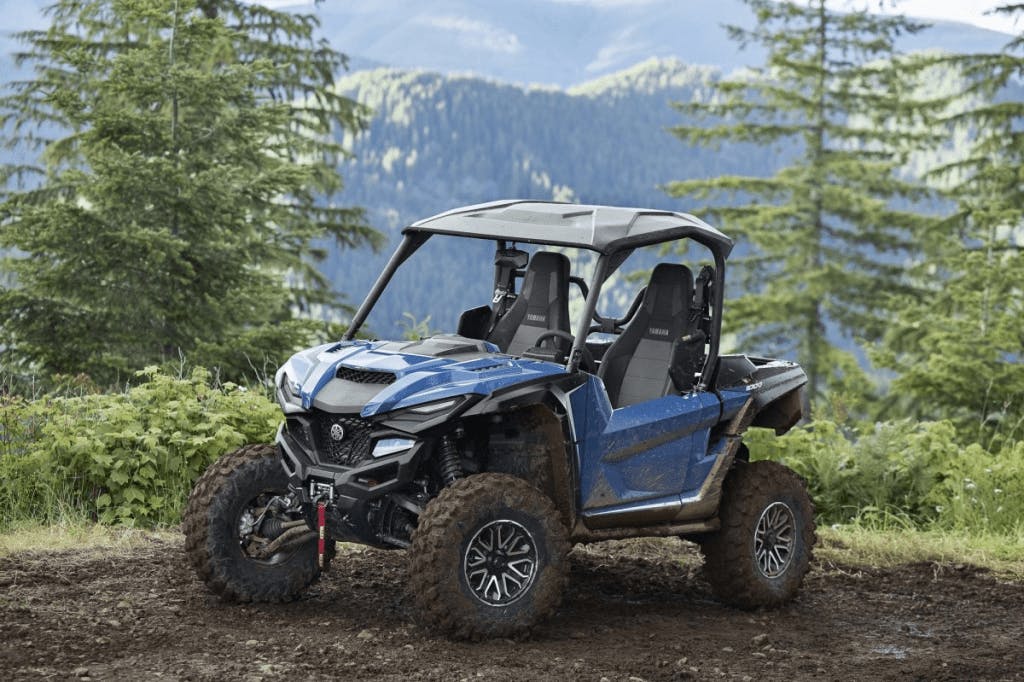
Why do I want it?
You like surprises. You ride hard and fast, you don’t have a huge budget, and you don’t care what other people think. You like thoughtful design touches, like the RMAX’s padded center-console knee rests, or the fact that its doors don’t have external handles, because Yamaha knew those handles would simply get covered in mud.
Despite what the manufacturers will tell you, the vast majority of side-by-side owners aren’t spending their days running 90 mph through the desert. The Yamaha has a dump bed, it can haul firewood around, and it’ll tow 2000 pounds. You can throw a cooler and a couple of charis in the back and still have plenty of room. And in terms of material quality and fit and finish, it’s built noticeably better than most alternatives from Polaris and Can-Am.
Plus, the CVT belt has a 10-year warranty. Which is virtually unheard-of in the industry and utterly bonkers. (Good, that is. Bonkers good.)
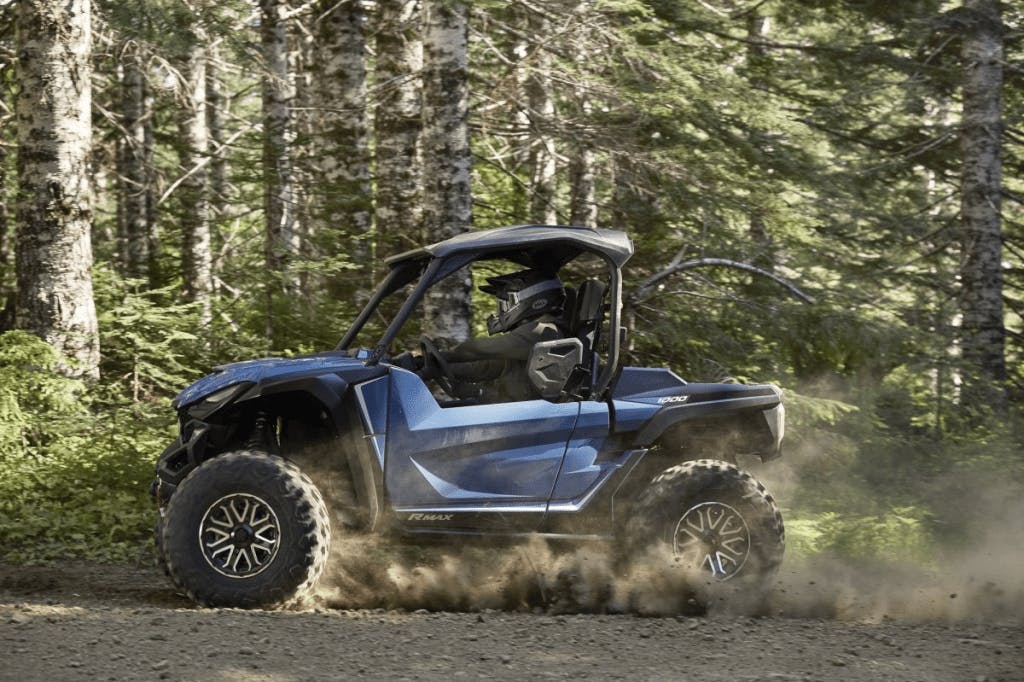
Why don’t I want it?
You want big power. You want more excitement and flash. You want a model designed and released in the last five years. Or you live in the American West, where the trails are wide-open, the BLM land is almost endless, and power is king.
In other words, the Yamaha is all the side-by-side most people-need. But need and want aren’t the same, and very few folks really need a side-by-side. For a certain set of people, turbo noises, modern looks, fancy suspension, and brand cachet are always going to be more exciting.
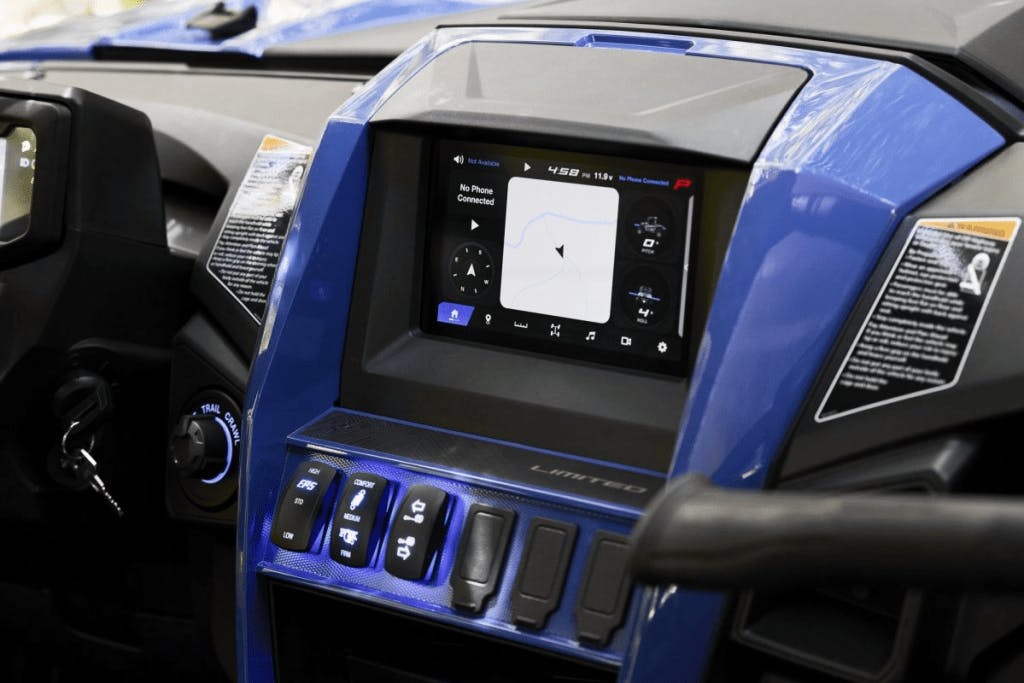
Which trim do I want?
The RMAX2 is not an expensive rig. The entry-model, the RMAX2 1000 R-spec, clocks in at $21,799. The most expensive version, the RMAX2 1000 Limited, is just a few grand more, at $25,499.
Our choice would be the model just below the Limited: the 2025 RMAX2 1000 XT-R, which stickers for $24,999. That trim brings upgrades like a Warn winch and color-matched seats, plus a removable in-dash navigation tablet and a decent audio package.
The nav system is a Magellan-based unit. It’s clunky and slow and little to write home about. That said, the device is a good backup in case your phone battery dies, and its presence should help resale value.
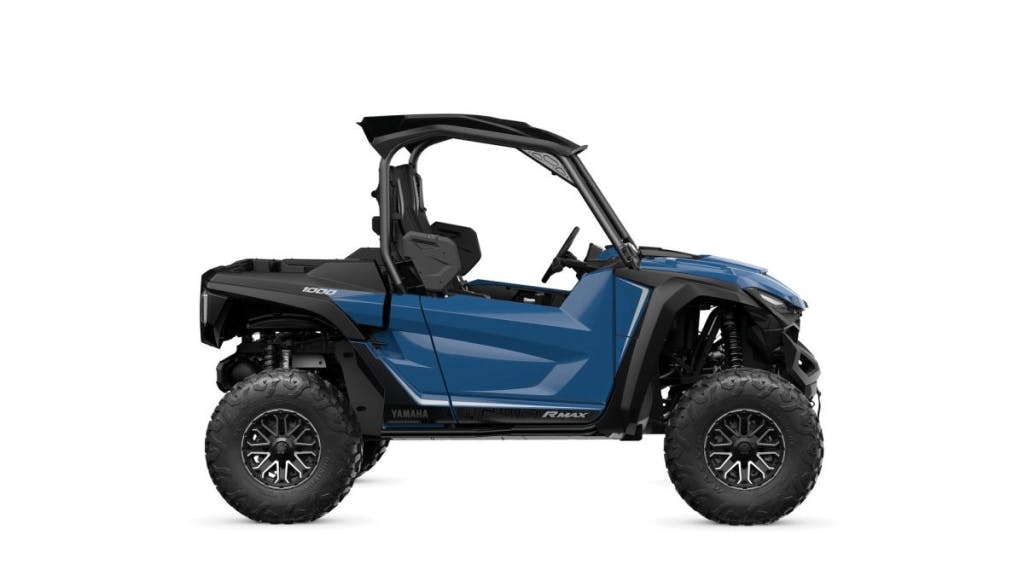
If I like this… what else should I look at?
Check out the Polaris General 1000 and XP 1000, the Honda Pioneer 1000 and 1000-5, and the Kawasaki Ridge. Each is newer than the Yamaha; the Ridge is the newest and sportiest of the three; the General and Pioneer are slightly more focused on work.
2025 Yamaha Wolverine RMAX2 1000 Specs
NOTE: Four-door versions of the Yamaha Wolverine RMAX2 1000 are sold as the RMAX4 1000.This buyer’s guide refers only to the two-door version.
Length: 119.3 in.
Width: 66.1 in.
Height: 77.8 in.
Wheelbase: 86.7 in.
Claimed Curb Weight: 1876 lb.
Engine: Liquid-cooled, 4-stroke, DOHC parallel twin
Displacement: 999 cc
Transmission: Ultramatic V-belt CVT with reverse, neutral, low, high, and engine braking
Power: 108 hp (est.)
Torque: N/A
Fuel System: Yamaha Fuel Injection w/ dual 48-mm throttle bodies
Steering: Electronic power assist
Drivetrain: Selectable 3-way locking differential; 2WD, 4WD, full diff-lock 4WD
Front Suspension: Dual A-arms w/ Fox 2.0 piggyback shocks, preload and high-/low-speed compression adjustable; 14.2 in. travel
Rear Suspension: Dual A-Arms w/ Fox 2.0 piggyback shocks, preload and high-/low-speed compression adjustable; 16.9 in. travel
Front Brakes: 255-mm hydraulic discs w/ 2-piston calipers
Rear Brakes: 244.5-mm hydraulic discs w/ 2-piston calipers
Wheels F/R: Cast aluminum beadlock; 14-in.
Tires F/R: 30×10 Maxxis Carnivore
Bed Capacity: 600 lb.
Towing Capacity: 2000 lb.
Seating Capacity: 2
Ground Clearance: 13.8 in.
Fuel Capacity: 9.2 gal.
